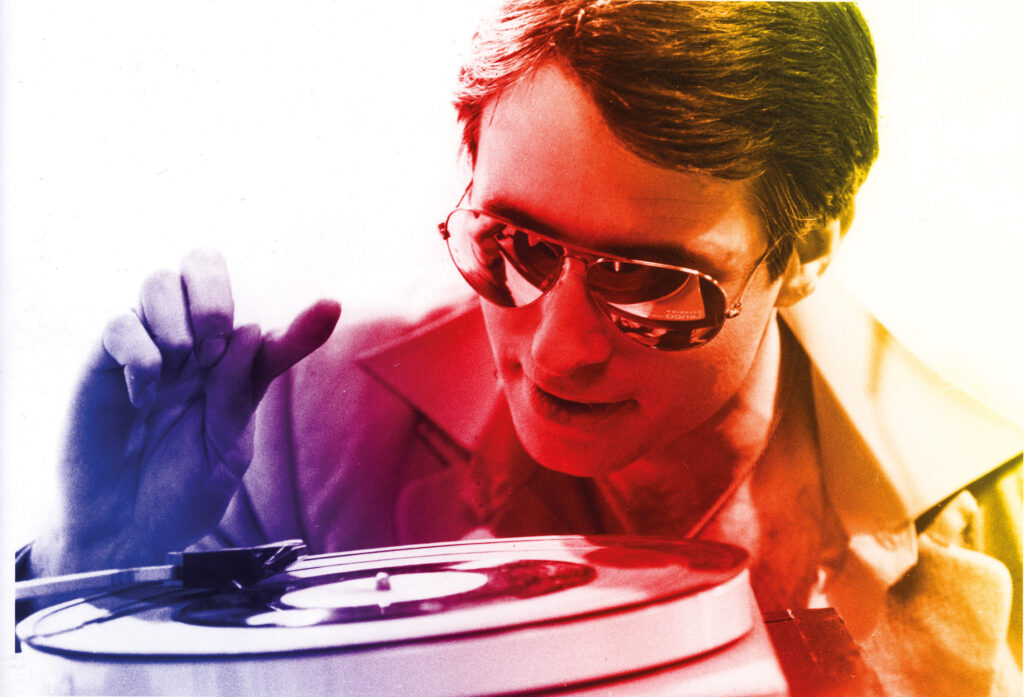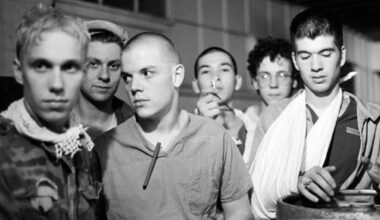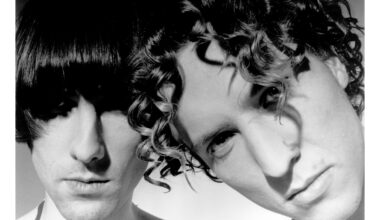Robin Scott remembers the genesis of ‘Pop Muzik’, his huge worldwide hit as M in 1979. New York, London, Paris, Munich, everybody talk about…

“In the late 1970s, I was running an independent label, Do It Records, and managing a band called Roogalator. We’d some interest from a major but the potential deal fell through so I was thinking, ‘OK, if it’s not working out with the majors, let’s set up an independent’, although the first release wasn’t exactly connected with that. The second was something of my own, ‘Moderne Man’, which was recorded in a studio that belonged to Deep Purple and was an attempt to bring together the post-punk thing with Giorgio Moroder.
‘Moderne Man’ got quite a lot of exposure and support, particularly with Capital Radio, and there was a glimmer of hope that it might go mainstream, but it didn’t. It opened the door, though. I was writing and getting together material on the fly and things started falling into place – kind of out of necessity. I’d had the idea for ‘Pop Muzik’ for a while, then I had the opportunity for some downtime in a studio in Paris.
The first version of ‘Pop Muzik’ was pretty much like a rhythm ’n’ blues piece. It was easy to lay it down, but it didn’t work. So I came up with the idea of making it a bit more dance oriented and did a James Brown inspired funk version, but it still had this pastiche feel about it and I didn’t feel that was right. So I had to rethink again, for a third time. A guy called John Lewis came to mind, a Canadian guy who was a classical composer and very gifted. I’d worked with him during my early musical development and I knew he was running a small studio in Covent Garden. He was doing ads, Pete Townshend was funding equipment for him, and he was on the cutting edge of synthesis, he was somebody that could possibly bring something special to the song.
So I went to him with this idea, a very simple three-chord trick. John really took to it and immediately came up with the fundamental component, the sequenced part, and then he introduced contrapuntal elements that were typical of someone who had some academic expertise. I ended up with an eight-track, which was the sequential aspect of the arrangement, and I knew that was the breakthrough. It suddenly sounded like it could go somewhere. So then I had to take an eight-track over to Paris, find a studio that had an eight track and a 24-track and transfer it all over, and then continue from there. And the process was ongoing dependant on downtime at the studio. The engineer was getting a bit sick of me as I’d already done two versions and he said, ‘We’ve got a smaller studio, you can go and work there’, so that’s where I took the 24-track.
I played guitar and I brought in a sax player and a drummer to play fills. It was really a workshop scenario. There wasn’t a live performance of a band as such, it was playing along to sequences. Then through Barclay Records, I found a session player called Wally Badarou, who later went on to work with Grace Jones, Robert Palmer, Level 42 and Sly & Robbie. He gave it the funk element and the colour. He overdubbed synth brass and did a magnificent job. The other thing was the female backing vocals. I was always fascinated with the close harmonies of female groups like The Andrews Sisters and Brigit, my girlfriend at that time, was a singer. She wasn’t performing a lot but I knew she had a voice, so I gave her the parts and she did all the backing vocals.
The song was a seminal moment for me personally and it struck a chord universally. I was just like any other punter, I’d soaked up a lot of music, and somehow I became tuned to the possibilities of the moment, but it wasn’t so contrived as I think some people might have thought. At my fingertips, I had the expertise and knowledge and the technology that was about to unfold and take hold of the whole of the music industry in the 1980s. It really was a defining moment.
And then I was approached to do a music video, one of the first. The company who did ‘Bohemian Rhapsody’ asked my record company if they had any artists who wanted to do a video and I said I’d be up for it. There was no way the BBC were going to take outside productions for ‘Top Of The Pops’, but fortunately Kenny Everett stepped in and played it on his TV show. That was the spark that it needed. I didn’t have a performing band and it was a difficult track to reproduce live, but it got exposure via radio and because the video could travel very easily. It went like wildfire, all round Europe and across the other side of the planet.
I don’t really know how many copies it has sold to be honest, but I got a lot of gold discs. They’re all packed away in boxes. It was a very interesting moment. Pretty hectic, pretty stressful and not a great experience going out there in those days, miming as you did on ‘Top Of The Pops’. I found that very frustrating. You become a victim of your own making.
These days, I don’t really feel like it’s mine. It’s out there in the public domain and I’m not as connected to it as you might think. I’m not especially possessive about it. I mean, I’ve taken care about the value of the copyright over the years and it’s served me very well, but there have been so many interesting things that have happened with that song, in terms of where it took me and the people who have covered it. It’s been very interesting to watch. It’s flattering that it appears to mean so much to so many people and that it’s still part of our culture.”





